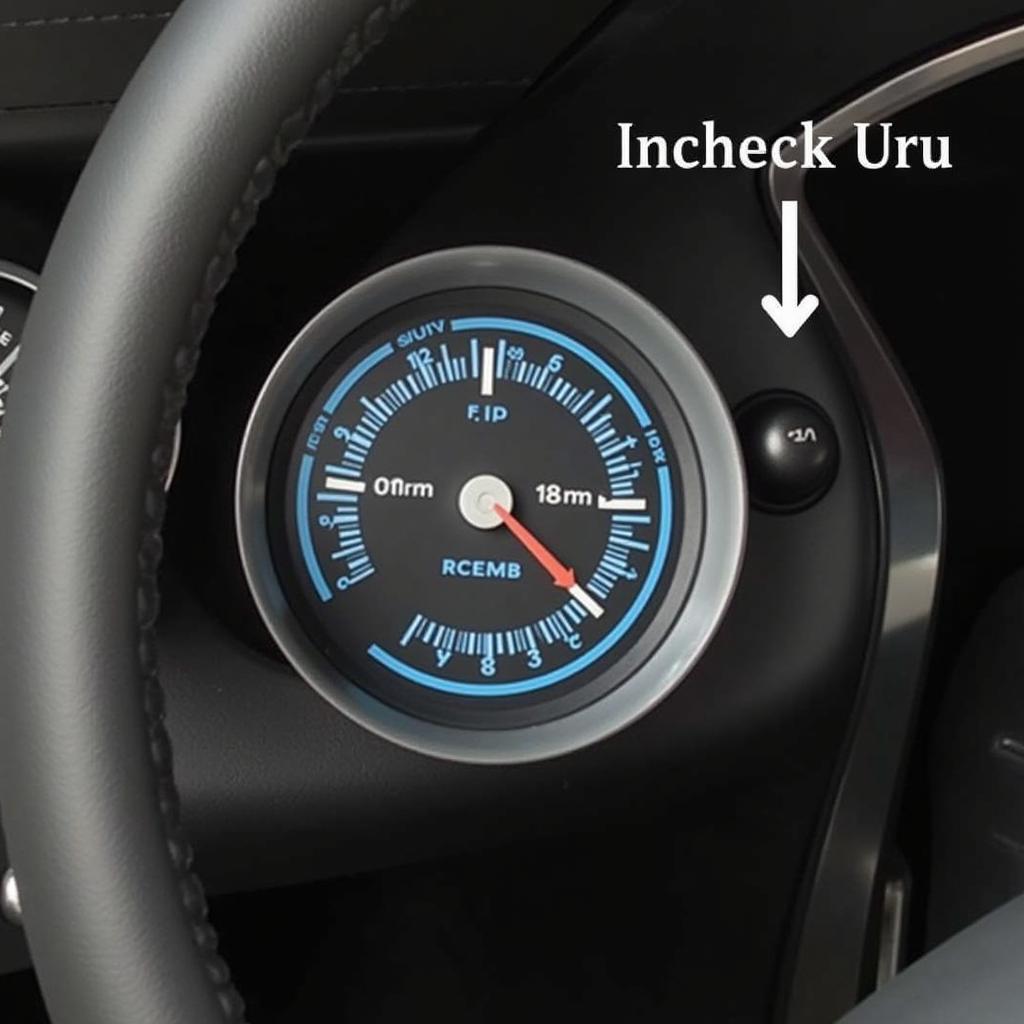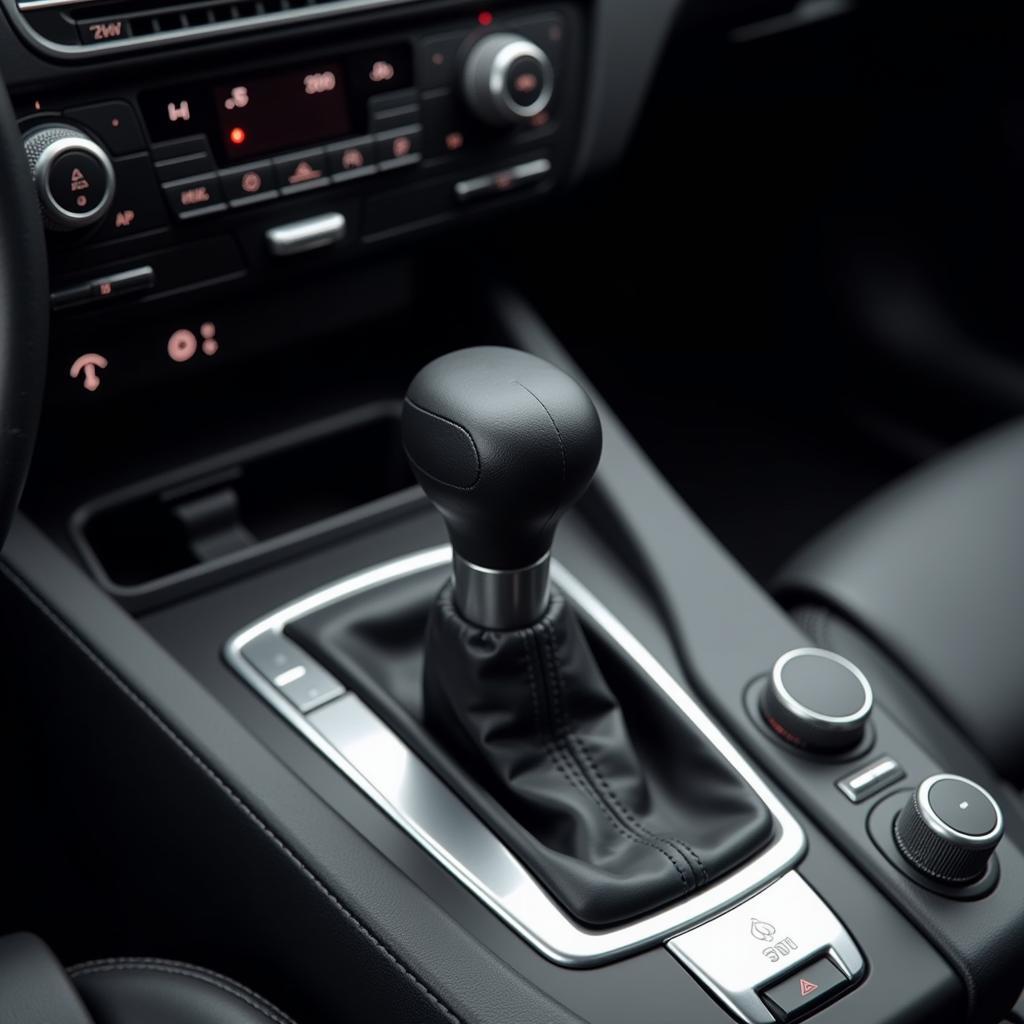The brake warning light on your 2004 Dodge Dakota is a crucial safety feature that shouldn’t be ignored. When it illuminates, it signals a potential problem within your braking system that requires immediate attention. This article will delve into the common causes behind a 2004 Dodge Dakota brake warning light and provide you with potential solutions to get you back on the road safely.
Understanding Your Brake Warning Light
Before we dive into the specifics, it’s important to understand how your brake warning light operates. In your 2004 Dodge Dakota, this light is connected to several components within your braking system, including:
- Parking Brake: The most common reason for the light to illuminate is an engaged parking brake.
- Brake Fluid Level: Low brake fluid, often caused by a leak, will trigger the warning light.
- Brake Pad Wear Sensors: Your Dakota is equipped with sensors that monitor brake pad wear. When the pads wear thin, the sensors activate the light.
- ABS System Malfunction: A problem within your Anti-lock Braking System (ABS) can also trigger the warning light.
Common Causes and Solutions for a 2004 Dodge Dakota Brake Warning Light
Now, let’s explore the most common reasons your brake warning light might be on and how to address them:
1. Engaged Parking Brake
Cause: It might seem obvious, but the simplest explanation is often the most likely. An engaged parking brake is the most frequent culprit behind an illuminated brake warning light.
Solution: Before panicking, ensure your parking brake is fully disengaged. If the light remains on after releasing the parking brake, move on to the next potential issue.
2. Low Brake Fluid
Cause: Brake fluid is the lifeblood of your braking system. As you apply the brakes, this hydraulic fluid amplifies the force you exert on the pedal, pushing the brake pads against the rotors to stop your vehicle. A leak in the system can lead to low brake fluid, compromising your ability to brake effectively.
Solution:
- Check the brake fluid level. Locate the brake fluid reservoir under the hood of your Dakota. The reservoir will have a “Minimum” and “Maximum” marking. If the fluid level is below the “Minimum” line, you’ll need to add brake fluid.
- Inspect for leaks. Carefully examine the area around the master cylinder, brake lines, and calipers for any signs of fluid leakage. If you notice a leak, it’s crucial to address it immediately. Repairing a brake line leak often requires the expertise of a qualified mechanic.
 Brake Fluid Reservoir
Brake Fluid Reservoir
3. Worn Brake Pads
Cause: Brake pads are designed to wear down over time. As you use your brakes, friction between the pads and rotors gradually wears them down. When the pads become too thin, the wear sensors trigger the warning light.
Solution: If your brake pads are worn, it’s crucial to replace them promptly. Driving with worn brake pads significantly reduces your braking efficiency and can lead to costly damage to the rotors.
Expert Insight:
“Many car owners underestimate the importance of timely brake pad replacement,” says John Smith, a certified automotive technician with over 20 years of experience. “Worn brake pads not only compromise your safety but can also lead to expensive repairs down the line if they damage the rotors.”
 Worn Brake Pads
Worn Brake Pads
4. ABS System Malfunction
Cause: The Anti-lock Braking System (ABS) in your 2004 Dodge Dakota is a crucial safety feature that prevents the wheels from locking up during hard braking. A malfunctioning ABS system, often indicated by an illuminated ABS warning light alongside the brake warning light, can stem from several issues:
- Faulty ABS Wheel Speed Sensor: These sensors monitor the rotational speed of each wheel and relay that information to the ABS control module. A malfunctioning sensor can disrupt the ABS system’s ability to function correctly.
- ABS Module Issues: The ABS module acts as the brain of the system. If it experiences electrical or internal faults, it can disrupt the entire ABS operation.
Solution: Diagnosing and repairing ABS system issues typically require specialized diagnostic tools and expertise. If you suspect a problem with your ABS system, it’s best to consult a qualified mechanic.
When to Seek Professional Help
While some brake warning light issues can be addressed with simple solutions, others require professional attention. If you encounter any of the following, it’s crucial to seek help from a qualified mechanic:
- You’ve added brake fluid, but the light remains on. This suggests a leak in the system that needs immediate attention.
- You see signs of brake fluid leakage. Addressing brake fluid leaks requires specialized tools and knowledge.
- You suspect an ABS system malfunction. Diagnosing and repairing ABS issues demand expertise and specialized equipment.
Conclusion
A glowing brake warning light in your 2004 Dodge Dakota signals a potential issue with your braking system. By understanding the common causes and their corresponding solutions, you can address the problem promptly and ensure your safety on the road. Remember, a properly functioning braking system is paramount for your safety and the well-being of others, so never ignore this crucial warning sign.

